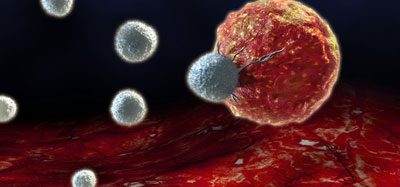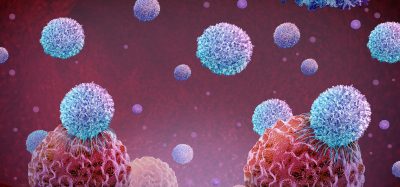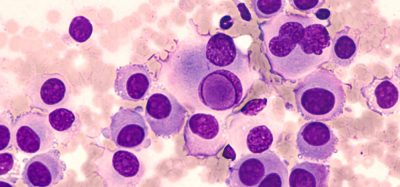Stopping immune cell leakage from tumours could improve skin cancer treatment
Posted: 3 March 2023 | Ria Kakkad (Drug Target Review), Tony Portelli (Drug Target Review) | No comments yet
Results show the number of specialised immune cells available for fighting skin cancer doubled when a new treatment blocked their escape from melanoma tumours.

Researchers at NYU Langone Health and its Perlmutter Cancer Center, both US, who led the study found that combining a chemical blocker of immune cell exit with another drug type, an immunotherapy, stopped melanoma tumour enlargement in more than half of mice tested. Immunotherapy alone had previously failed to prevent the cancers’ growth.
Recent advances in immunotherapies, medications designed to help the body’s immune defence system detect and kill cancer cells, much like it would an invading virus, have greatly improved cancer care, researchers say. The treatments work by boosting the action of immune cells that both directly attack the cancer and prevent cancer cells from evading recognition by the immune system.
The latest generation of immunotherapies, called immune checkpoint inhibitors, protect anti-tumour T cells from inactivation and have become a mainstay in the treatment of melanoma. While these drug treatments do not work for all patients, previous research shows that having more overall T cells, particularly when positioned in the centre of tumours, makes the drugs more effective.
The new study, published in the journal Nature Immunology showed that key immune cells called CD8 T cells escape melanoma tumours when they gather near the tumour periphery as well as nearby lymphatic vessels, which carry immune cells throughout the body. Indeed, the researchers found that more T cells accumulate inside tumours in mice bred to lack lymphatic vessels in their skin.
Further experiments showed that signalling molecules, chemokine CXCL12 and its related receptor protein CXCR4, attract and move T cells toward lymphatic vessels. When researchers blocked either CXCL12 or CXCR4, T cells could not emigrate from the tumour and instead stayed in its centre.
Taken together, the researchers say the results demonstrate how T cells are likely drawn to the tumour’s outer rim by CXCL12 and closer to the lymphatic vessels, where CXCR4 “encourages” the T cells to exit the tumour. When researchers combined immunotherapy with a chemical blocker of CXCR4, the number of T cells in mice tumours doubled and half of tumours stopped growing.
“Our study confirms for the first time how CD8 T cells are escaping melanoma tumours through chemokine signalling to their nearby lymphatic vessels, leaving tumours less susceptible to anti-cancer immunotherapy,” said study lead investigator Dr Maria Steele. “These findings reveal that T cells circulate out of tumours, reshaping scientific views of tumour immunology where T cells randomly find and target tumour cells.”
“Our study shows that blocking this escape route lets immunotherapy work better in fighting the growth of skin cancer cells,” said study senior investigator Dr Amanda Lund.
Among the study’s other results was that T cell leakage depended on their potency, or how strongly they could bind to target proteins on tumour cells. The longer the most potent T cells spent inside tumours, the more likely they were to encounter their target cancer cells and the more likely these T cells were to remain inside the tumour. Increasing the initial time these T cells spend inside the tumour, the researchers say, may help improve therapy.
Researchers say the study overall shows that the lymphatic system likely recirculates T cells out of tumours. And that for some patients, blocking the exit signals, either CXCR4 and/or CXCL12, is needed to shift the balance in favour of keeping T cells inside of tumours long enough for immunotherapy to work.
Future research will look at how blocking tumour T cell exit influences immunotherapy, say the authors, who also plan to look at targeting not just the chemokine signals but also other molecular pathways in the lymphatic vessels to increase the “dwell time” of T cells inside tumours.
Related topics
Cell Therapy, Disease Research, Immuno-oncology, Immuno-oncology therapeutics, Immunotherapy, Oncology, T cells
Related conditions
Melanoma, Skin cancer
Related organisations
NYU Langone Health Perlmutter Cancer Centre
Related people
Dr Amanda Lund







